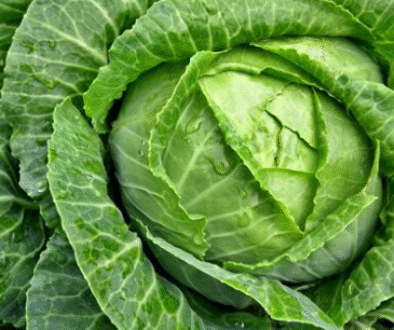Love your Liver!
October is Liver Awareness Month, devoted to the importance of liver awareness that gives you the opportunity to focus on the important role the liver plays. This month, there should also be a heightened awareness about different forms of liver disease, including the threat posed by obesity and fat deposition in the liver created by metabolic disease and/or alcohol use.
The liver is the largest gland in the human body and has many important complex functions. It helps digest, absorb, and process food, and filters the blood coming from the digestive tract, before passing it to the rest of the body. The liver also detoxifies chemicals and metabolizes drugs. As it does so, the liver secretes bile that ends up back in the intestines. The liver also makes proteins important for blood clotting and other functions.
Whatever you put in your body, your liver has to deal with and process, on top of other everyday functions, such as: use carbs, protein, and fats to process into energy, assist in digestion, use 30 percent of the circulating blood in your body every minute to perform chemical reactions that remove harmful toxins, distribute and store essential nutrients, make proteins, and detoxify your blood from carcinogens, or toxic invaders like alcohol, and other harmful food ingredients. And you thought you had a hard job!
Alcohol Liver Disease
When you drink alcohol it is quickly absorbed directly into your blood stream and then passes through the liver. Since the liver sees the highest concentrations of alcohol, it is one of the organs in the body most prone to developing alcohol related problems.
Almost all excessive drinkers will develop the first stage of alcoholic liver disease called fatty liver which can disappear once patients stop drinking excessively. If patients continue drinking excessively then a proportion (around 20-30%) will develop the next stage of alcoholic liver disease- alcoholic hepatitis. In this condition, the liver becomes inflamed and in its extreme form, patients can die of liver failure. An even smaller proportion of patients (around 10%) will develop a permanently scarred and damaged liver (cirrhosis), if they continue to drink excessively. Why certain heavy drinkers remain at the stage of fatty liver and others progress to alcoholic hepatitis and cirrhosis is not known at present. Undoubtedly, however, the more you drink, the greater the frequency and duration of heavy drinking, and the more likely you are to develop the more advanced forms of disease.
Non-Alcoholic Fatty Liver Disease
There is an alarming increase in the incidence of Non-Alcoholic Fatty Liver Disease (NAFLD), which, staggeringly, affects up to 25 percent of people in the United States. As its name suggests, NAFLD is the buildup of extra fat in the liver that isn’t caused by alcohol. It’s normal for the liver to contain some fat. But if more than 5 to 10 percent of the liver’s weight is fat, then it is called a “fatty liver.” This condition can then progress to Non-Alcoholic Steatohepatitis (NASH), which means that along with the fat, there is inflammation and damage to the liver. A swollen liver may cause scarring (cirrhosis) over time and may even lead to liver cancer or liver failure.
Most often, NAFLD tends to develop in people who are overweight or obese or have diabetes, high cholesterol or high triglycerides. Sedentary behavior is another major contributing factor to the onset of NAFLD. For these reasons, concern continues to grow, as one in 10 children—that’s seven million children in the United States—is estimated to have fatty livers.
Herbal Products Inducing Liver Injury
The use of herbal products in Western countries has grown significantly, rivaling prescription medications. Their uses range from weight loss and body-building purposes to creating a sense of well-being and for symptoms of chronic diseases. Many people erroneously believe that because they are natural, the must be effective and safe. However, few herbal products have been studied in well-designed controlled clinical trials of patients with liver or other diseases, and some have caused liver injury severe enough to require transplantation and cause death. Multi-ingredient commercial products have been identified by the ongoing National Institutes of Health-supported Drug induced Liver Injury Network (DILIN)study as the biggest culprits of liver injury.
Viral Hepatitis
In the United States, viral hepatitis is most commonly caused by hepatitis A, and hepatitis C. These 3 viruses can all result in acute disease with symptoms of nausea, abdominal pain, fatigue, malaise, and jaundice. Additionally, Hepatitis B and C can lead to chronic infection. Patients who are chronically infected may go on to develop cirrhosis and liver cancer. Furthermore, chronic hepatitis carriers remain infectious and may transmit the disease for many years. These two chronic viruses are transmitted through body fluids and can be acquired through remote blood transfusions, sexual intercourse, and intravenous and intranasal drug use
So, how do we take care of our livers?
1. Maintain a healthy weight. Weight loss can play an important part in helping to reduce liver fat.
2. Eat a balanced diet.
– Avoid high calorie-meals, saturated fat, refined carbohydrates (such as white bread, white rice and regular pasta) and sugars. Don’t eat raw or undercooked shellfish.
– For a well-adjusted diet, eat fiber, which you can obtain from fresh fruits, vegetables, whole grain breads, rice and legumes. If you eat meat, limit the amount of red meat. If you eat, dairy, pick low-fat varieties, and limit fat intake to 20% or less in your diet, focusing mostly on “good” fats (monounsaturated and polyunsaturated such as vegetable oils, nuts, seeds, and fish).
-Hydration is essential, so drink a lot of water.
3. Exercise regularly. When you exercise consistently, it helps to burn triglycerides for fuel and can also reduce liver fat.
4. Avoid toxins. Toxins can injure liver cells. Don’t smoke and limit direct contact with toxins from cleaning and aerosol products, insecticides, chemicals, and additives.
5. Use alcohol responsibly and limit your intake
6. Avoid the use of illicit drugs, which include marijuana/hashish, cocaine (including crack), heroin, hallucinogens, inhalants, or prescription-type psychotherapeutics (pain relievers, tranquilizers, stimulants, and sedatives) used non-medically.
7. Avoid contaminated needles. Of course, dirty needles aren’t only associated with intravenous drug use. You ought to follow up with a medical practitioner and seek testing following any type of skin penetration involving sharp instruments or needles. Unsafe injection practices, though rare, may occur in a hospital setting, and would need immediate follow-up. Also, use only clean needles for tattoos and body piercings.
9. Don’t share personal hygiene items. For example, razors, toothbrushes and nail clippers can carry microscopic levels of blood or other body fluids that may be contaminated.
10. Practice safe sex
12. Follow directions on all medications. When medicines are taken incorrectly by taking too much, the wrong type or by mixing medicines, your liver can be harmed. Never mix alcohol with other drugs and medications even if they’re not taken at the same time. Tell your doctor about any over-the-counter medicines, supplements, and natural or herbal remedies that you use.
13. Less is more for the liver, which must clear every medication and vitamin taken. Only use necessary products and limit the use of extraneous medications, over the counter products, herbals, and vitamins in supplements.
Liver-Loving Foods
It is never too late to give your liver a new start. Check out these liver-loving foods!
Turmeric:
Used as a spice, the active ingredient in tumeric, known as curcumin, has been known to help our bodies digest fats and stimulate the production of bile. It can also act as a natural detoxifier for your liver.
Coffee:
A 2014 study published in Hepatology found that compounds in coffee boost liver health by lowering the levels of elevated liver enzymes and thus reduce the risk of mortality in cirrhosis and reduce the severity of NASH. Furthermore in animal studies, both coffee and coffee extracts have also been shown to reduce the expression of genes involved in inflammation, with the effects most pronounced in the liver, and have anti-cancer properties.
Olive Oil:
Studies have shown that extra virgin olive oil and its extracts protect against oxidative damage in the liver, in addition to its known effects in lowering the risk of heart disease by reducing the total and low-density lipoprotein (LDL, or “bad”) cholesterol levels in the blood
Salmon:
Researchers have also found that found omega-3 fatty acids alleviated the buildup of fat in the liver cells, and protected the liver from the damaging effects caused by obesity, by decreasing the rate at which the liver produces triglycerides, a type of energy-dense molecule that forms the primary foundation of fat cells.
Egg:
Rich in choline, an essential nutrient that when depleted from the diet, can lead to fatty liver and liver cell death.
Soy:
In animal studies, researchers found that obese rats that were fed soy showed a 20 percent reduction in triglycerides and overall fat accumulation in the liver, as compared to lean rats fed soy. This research suggests that adding soy protein to the diet of individuals with fatty liver may help alleviate liver damage.
Take care of this incredible organ, responsible for so many functions that keep us alive and liver, and LOVE YOUR LIVER!


